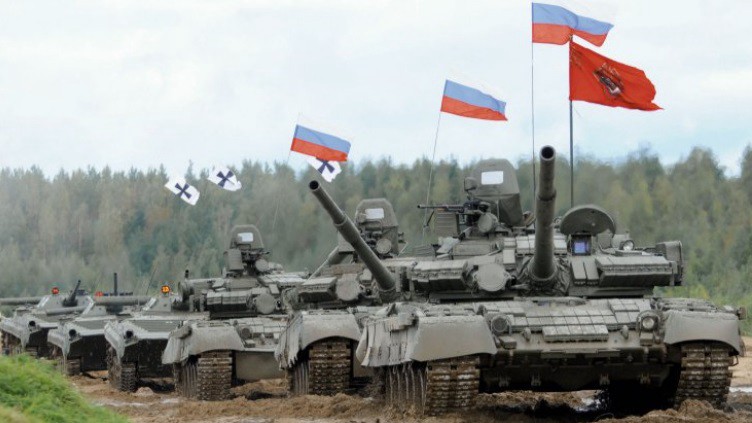The geopolitical map of the world today is still largely conditioned by agreements signed during or just after the Cold War, and has been very effectively staged by Moscow and Beijing over the past 20 years, without neither the United States nor the United States. The West in general have not shown any determination to oppose it. This is how the Sino-American agreements around the case of the island of Taiwan were negotiated from the beginning of the 70s, with the aim of removing Beijing from the equation of the Cold War and the Soviet camp, and this even though the island had no intention of joining the People's Republic of China. The notion of sphere of influence inherited from post-Cold War negotiations in Eastern Europe has also been at the heart of Russian policy in Ukraine, Moldova, Belarus and Georgia, as well as in many former Soviet republics in the Caucasus. and Central Asia.
In recent years, both Beijing and Moscow have greatly intensified their territorial and geopolitical claims, without the United States, nor the Europeans, nor the countries bordering the China Sea, having opposed them forcefully, not wishing to threaten them. the fruitful trade relations with China, or the dependence on Russian gas, leaving the leaders of the two countries to harden their demands, going so far as to speak of a "red line" if the West were to challenge them on these subjects. This is precisely what Washington, but also NATO, seem to want to put an end to today, several recent statements clearly pointing in this direction, while tensions continue to increase vis-à-vis these two countries. These statements suggest that, under the impetus of the United States, the West would now be ready to toughen its tone vis-à-vis Moscow and Beijing, even if it means crossing the famous red lines drawn by Vladimir Poutine and Xi Jinping.
Ukraine's NATO membership to contain Russia
In Europe, it was the Secretary General of NATO, the former Norwegian Prime Minister Jens Stoltenberg, who declared, during a press conference following his visit to Washington to meet the Secretary to the U.S. Defense Lloyd Austin, that the Alliance now had to change its extension policy to cope with the growing Russian threat. And to add that the notion of Russian Sphere of Influence inherited from the Cold War was no longer in line with political reality in Europe, and that NATO should therefore no longer refrain from welcoming new allies, even if it were to cross the red lines drawn by the Russian leadership. Naturally, this is a question, first and foremost, of Ukraine, which keeps knocking on NATO's door, and to a lesser extent of the European Union, since its annexation in 2014. , of Crimea by Russian forces, and the significant support given by Moscow to the secessionists of Donbass. It must be said that with 255.000 active soldiers, and 900.000 reservists, the Ukrainian armed forces could represent a major ally for NATO's eastern front, if the Alliance agrees to help Kiev to modernize its equipment. military.

A few days ago, Ukrainian President Volodymyr Zelensky reiterated his intention to integrate his country into the Atlantic Alliance, but also to find the $ 25 billion he considers necessary for the modernization of its armed forces. The candidacy of Kiev received, concomitantly with the statements of Jens Stoltenberg, strong support from Polish President Andrzej Duda on the occasion of the Warsaw Security Forum held on October 5th. In addition, the latter called for greater cooperation between NATO and the European Union to face the growing threat from Russia, believing that the latter now threatens not only the Eastern front of the Alliance, but also its southern and northern fronts. And to estimate that if, even today, the armed forces of the Atlantic Alliance surpassed the Russian armies, the latter had a capacity of mobilization and deployment giving them a tactical and even global advantage in Europe. No wonder, since the Russian armies have shown that they were able to mobilize and deploy in 3 weeks more than 120.000 men on the Ukrainian border, where NATO is only able to mobilize them. 40.000 in the best case on a similar relay to deploy them on its eastern borders. Under these conditions, the Ukrainian armed forces could obviously bring a decisive added value to dissuade Moscow from any unfortunate initiative in Europe, even if the United States were to become involved in the Pacific.

The rest of this article is for subscribers only
The Classic subscriptions provide access to
all articles without advertising, starting at € 1,99.
Newsletter subscription
Register for the Meta-Defense Newsletter to receive the
latest fashion articles daily or weekly

